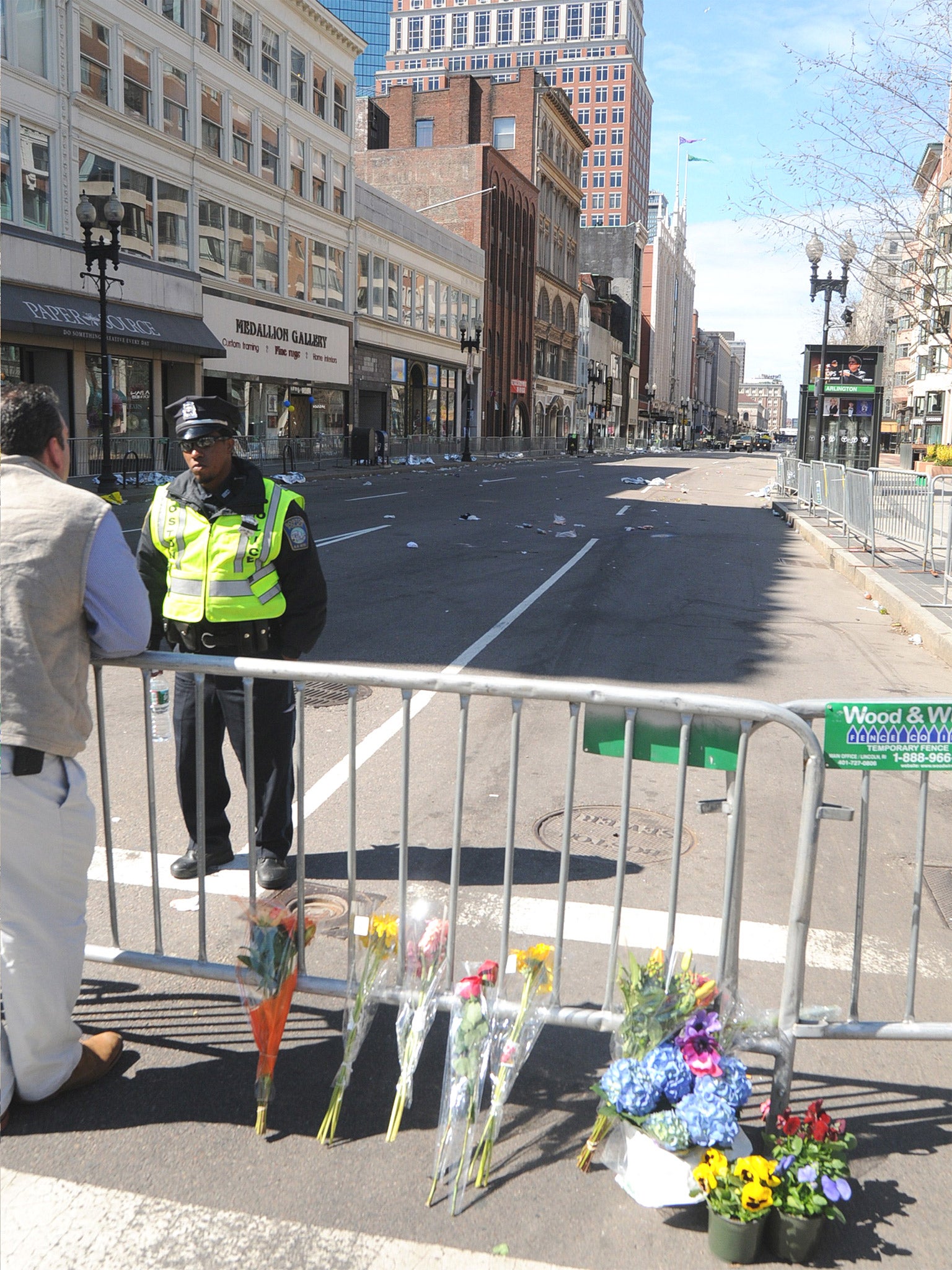Boston Marathon bombs: How forensics will help to piece together who built devices
30 specially trained forensic scientists are working on scene

The confirmation that no undetonated devices have been found in Boston is a blow for those charged with piecing together exactly who is responsible for the twin blasts.
Unexploded bombs might have handed the FBI a treasure trove of uncorrupted information. Instead they are confronted with two large and chaotic blast scenes.
But even once bombs go off, forensic investigators are still able to gather vital clues using painstaking work that is akin to putting together a million piece jigsaw.
The Bureau of Alcohol, Tobacco and Firearms (ATF) has confirmed that 30 specially trained forensic scientists are currently working around the clock on the two blast sites. Over the coming days, no piece of evidence will be too small to ignore. They will comb every square inch of Boylston Street, including up on top of the roofs, bagging any fragment of the bomb they can find for analysis at the FBI’s bomb laboratory in Quantico.
Tom Thurman, an explosives expert at Eastern Kentucky University, told The Independent that FBI investigators would employ similar techniques to those used by the Metropolitan Police to investigate the July 7 London bombings.
“It’s a huge undertaking but they’ll do what you guys did following the subway bombings in London,” he said. “You have to use everything you have to put it all together”.
Thurman should know. A former head of the FBI’s Bomb Data Centre, over the past thirty years he investigated the devices used to destroy Pan Am Flight 103 over Lockerbie, the assassinations of two government officials in Alabama and Georgia as well as the first World Trade Centre bombing in 1993.
As scientists examine the blast sites, officers will spend days collecting and trawling through thousands of hours of video footage in the hope of tracing the bomber’s movements. “It’s incredibly laborious work,” he said. “But the Met managed to trace the London bombers all the way back to that car park.”
From watching the footage of the blasts, Thurman believes the bomb maker (or makers) will more likely have used a low impact homemade explosive.
“Generally military grade explosives such as C4 detonate with black smoke,” he said. “White smoke, of the kind we saw in Boston, tends to indicate the use of improvised or homemade explosives.”
Most homemade explosives deflagrate as opposed to detonate, meaning they need to be packed into a container with a detonator in order to explode with enough force to kill. Analysts will need to comb the area to find any piece of the container or the bomb parts themselves.
Dr Peter Fagenholz, a trauma surgeon at Massachusetts General Hospital, said many of the victims being brought to him had shrapnel injuries to the “lower extremities” which might point towards a bomb being left on the floor, possibly in a bag.
That creates a further dilemma for forensic investigators. Much of the evidence itself will be embedded in the blast victims themselves. Surgeons working on those who have survived will hand pieces of shrapnel to investigators for analysis. Pathologists will also x-ray the bodies of the three people who have died so far looking for any foreign bodies which might have come from the bomb itself.
Deducing whether the blasts were suicide bombings, Thurman says, shouldn’t be too difficult.
Injuries to suicide bombers tend to have a very distinctive look compared to their victims - their heads, for example, are often cleanly blown away from the body.
“My guess would be those on the scene will already know whether this is a suicide bombing or not,” he said.
Back at the Quantico lab, scientists will begin to piece together the parts of the bomb that have been found. Their analysis is often divided into three types – mechanical, chemical and DNA.
The first looks at how the bomb was actually made. “What you’re looking for is the bomber’s signature,” said Thurman. “Are the two bombs similar and therefore made by the same person? Have we seen this kind of device before anywhere?”
Chemical analysis will be used to determine what kind of explosive was used and how it was made. Residue will be taken both from the blast site and the victims themselves. Finally there’s always a chance that DNA or fingerprints might be found.
“Every now and then you get lucky,” said Thurman. “Some bombers – such as [the Unabomber] Ted Kaczynski – are incredibly careful about what they leave behind. Others think that if the device explodes there will be nothing left to find.”
Join our commenting forum
Join thought-provoking conversations, follow other Independent readers and see their replies
Comments